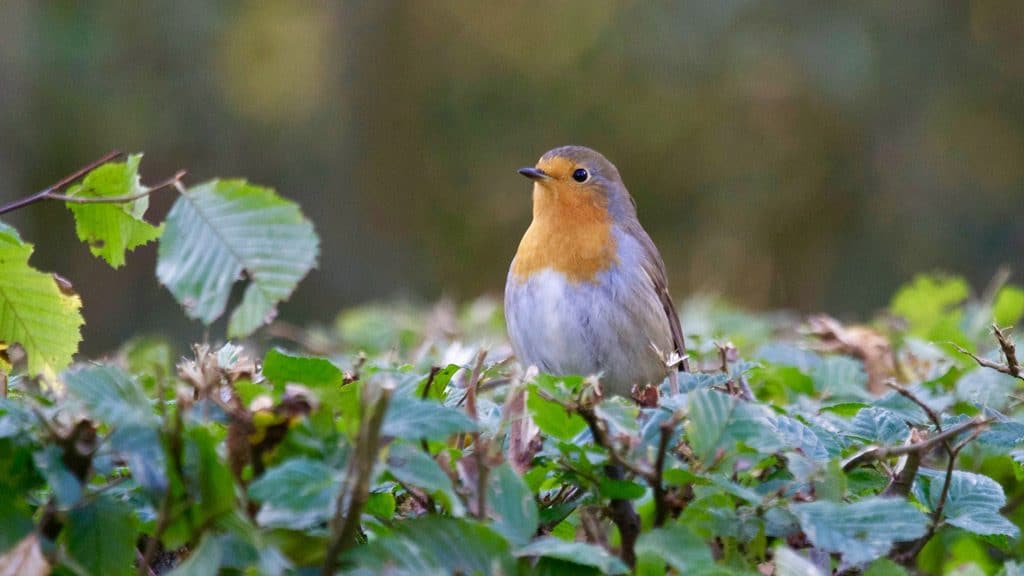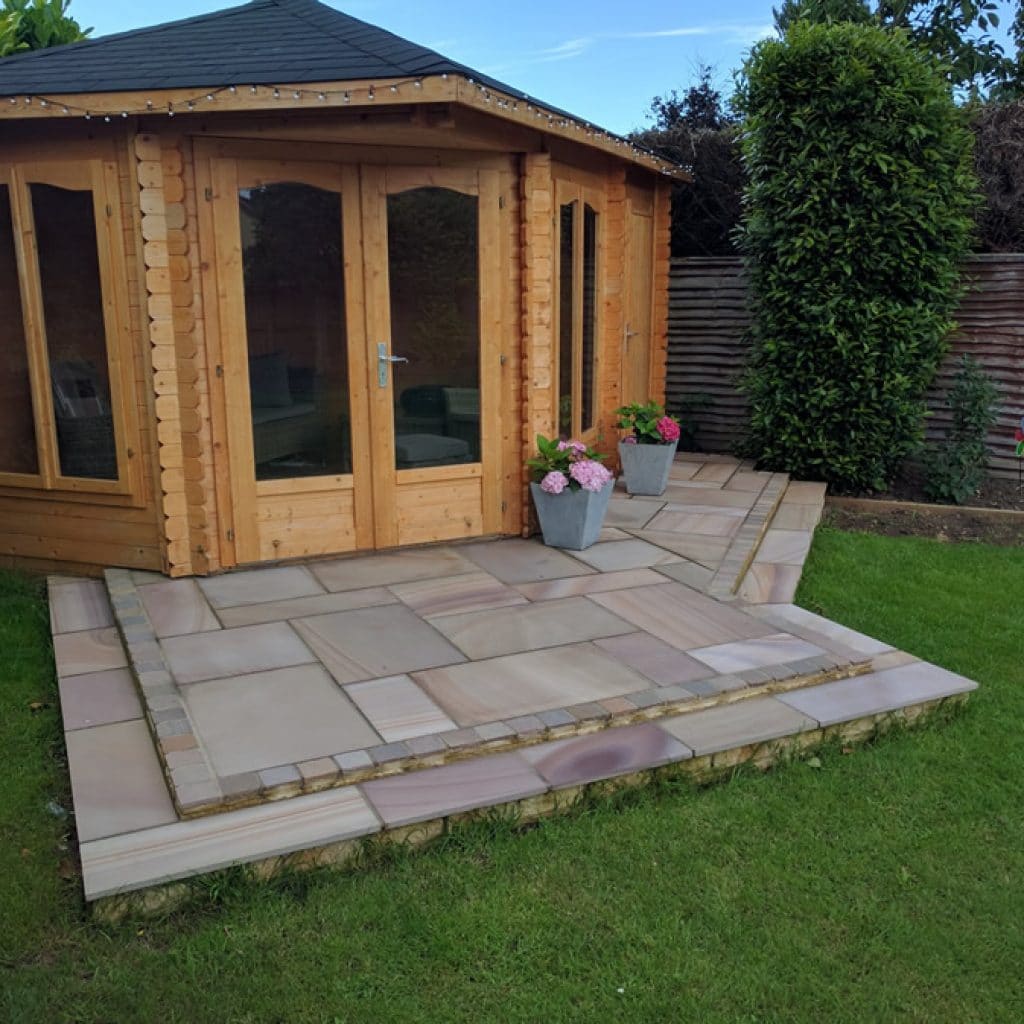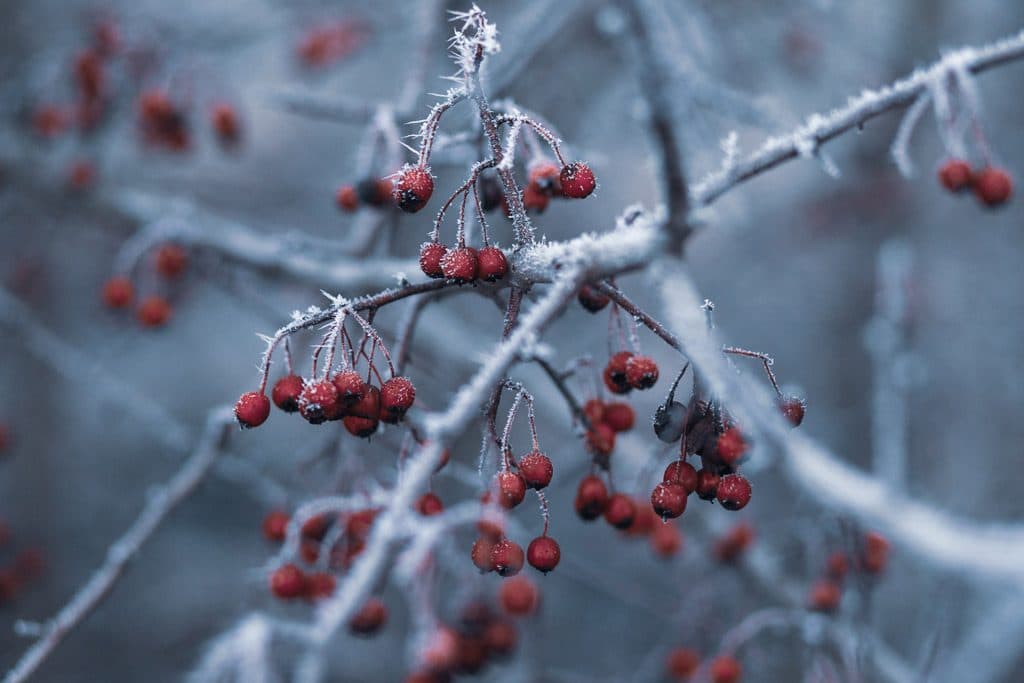Garden design to attract birds
Garden birds are a joy all year round. There’s lots of information out there about planting for pollinators, but what about garden design to attract birds. Here are my ideas.
There are a trillion and one reasons for wanting to encourage birds into your garden. Not only are birds a good indicator of the ecological health of your garden. Their behaviours are fascinating to study and being surrounded by nature is great for your own wellbeing.
Garden design plays a big part in how much you can enjoy watching your feathered friends. Getting the layout and the planting right will give you and the birds a real boost.

Native hedging, like this green beech, has lots to offer garden birds. Shelter, nesting spaces and a source of tasty insects. Choose mixed native hedging if you want lots of winter berries too
Creating a bird watching paradise
As well as creating a haven for the birds, you need to have plenty of viewpoints so that you can enjoy them all year round. You’ll probably want to be able to see the birds from your window. But how about a nice little summer house or a shelter where you can sit quietly and watch from a different angle?
As well as garden buildings, you could create a little seating arbour where you can sit unnoticed by the birds while you enjoy your morning coffee.
Of course, you’ll want to be able to observe as many different behaviours as possible. So why not add bird-friendly features around the garden – all of them with vantage points for yourself.
- A lawn for the blackbirds and thrushes that like to forage in short grass.
- Wildlife pond with shallow margins for drinking and bathing
- Hedges for hiding and nest building
- Perches for the birds to sit on and sing
- Areas of longer grass and meadow plants
- Planting to provide a wide range of food
- Feeders that are easy for you to reach, clean and observe

A pretty summerhouse with a patio for your bird feeders makes an ideal observation hide
What do garden birds need?
Any living creature needs water, food, shelter and an opportunity to exercise their natural instincts. There’s a wide variety of birds in the UK. Some are here all year round, some only visit for a few months at a time. So how can you know what’s best to have in your garden?
Water is a must
A wildlife pond brings lots of benefits to a garden. But if that’s not for you, a shallow bowl of water can become an attractive bird-friendly feature. One celebrity gardener uses square-shaped metal tanks to collect rainwater. These are multi-purpose. They are water butts to fill his watering can from, they are drinkers for insects and birds and they house beautiful water lilies for summer colour.
Safety
Most birds like to feel safe from predators and there are various ways that garden design can facilitate that.
First of all – provide some open spaces. So that they can see if there’s a cat on the horizon and take evasive action. This has a double benefit – it means you can see the birds clearly too.
You could place feeders on a patio. In fact, I thoroughly recommend it. Having a hard surface beneath your bird feeders means that you can sweep up spilt seed before it attracts vermin.
Next, think about creating some hiding places for birds – so that they can discreetly assess the garden before venturing out to the feeders. A nice native hedge for example or an arbour draped with climbing plants. A shrubbery too can become a haven for birds. Don’t forget to think of yourself – choose shrubs and plants that appeal to you and that you can manage easily.
Perches and nesting spaces
Bird behaviour fascinates me. I love how in spring the males sing at the top of their voices to protect their territories and attract a mate. If you want to hear birdsong, you need to give the singers a stage. Trees, rooftops or even a pergola are ideal. Anywhere relatively high.

Can there be any greater privilege than having a bird choose your garden as the place to raise their babies?
Nesting space seems to be a rarity in modern gardens. We’re too busy and too tidy-minded for there to be many undisturbed spots in the garden. But you can create nesting space. As you think about garden design to attract birds, plan where you can put nesting boxes. Can they be attached to the house wall? The shed? The fence? The carport? Trees? Remember that different species prefer different nesting sites. Do your homework and plan accordingly. Your landscaper will be only too glad to put the nest boxes up for you.
Providing a variety of food sources
Your feathered visitors will be attracted to your garden for food before they think about nesting etc. Most birds are specialist feeders. Some want seeds, some want to catch insects on the wing, others want to forage for worms or aphids. In short, what the birds need from you is an eco-system with perhaps some supplementary feeding.
Plants will be a key part of your garden design to attract birds. Plants for seed and plants to attract insects. Have you thought about a mini wildflower meadow? A carefully chosen mix of grasses (for seed), flowering plants (small flying insects) and larval food plants (caterpillars) as well as seed-producing beauties such as teasels and knapweed.
Of course, seed-producing plants can be included in your beds and borders too. Take a look at some of our native species. Scabious is wonderful, as are achillea and vipers bugloss. For an easy annual plant that will bring you great joy and many birdy visitors, go for sunflowers. They come in a surprisingly big range of colours and sizes and grow well in pots too.
Don’t forget about autumn berries. Cotoneaster and pyracantha offer great value. They have insect attracting flowers in spring followed by beautifully coloured berries in the autumn. Don’t expect a lengthy show from the berries though, in my experience, they get gobbled up pretty quickly.
Honeysuckle is another berried plant. It’s wonderful when it’s trained over a screen or a pergola. You can relish the scent in early summer and the birds will thank you for the shelter and the berries.
Never ignore ivy. Some see it as a nuisance. Birds adore it AND you’ll also be doing the bees a favour if you grow it. Ivy flowers in late summer when most other bee food sources have disappeared. Ivy is also crucial in the life cycle of the holly blue butterfly (they need holly AND ivy)

Look after the birds in the wintertime by including berry-bearing trees and shrubs in your planting plan
Things to avoid in garden design to attract birds
Netting – Please don’t use plastic netting in your bird-friendly garden. The poor souls are so easily caught up in it. If you need to protect fruit and vegetables, try to use chicken wire. If you must use netting, make sure it is kept taught. Consider including a fruit cage in your garden design – you can keep your whole veg patch safe inside a fruit cage.
Artificial grass – has no value for wildlife. If you don’t feel able to care for a manicured lawn, why not consider a low growing wildflower mix, a sedum lawn or even a gravel garden?
Cat deterrents – whilst I can perfectly understand why you might not want cats in your bird-friendly garden, there’s no excuse for cruelty to any species. Please stick to natural ways to discourage cats.
Pesticides and herbicides – if they get into the birds’ food chain, garden sprays can do a lot of harm. Use companion planting and natural ways to control weeds and pests in the garden. Mulch to keep weeds at bay and plan your planting so that you can manage your garden easily.
Creating a garden design to attract birds
There’s a knack to creating a garden design to attract birds. Start by listing the elements you want to include and then add all of those practical things you need for yourself – a washing line, a bin store etc.
Now think about where you will place vantage points and what you would like to see from each one. Don’t forget to think about where the sunniest and shadiest parts of your garden are.
If you have a sloping garden, how can you use that to your advantage? Do you need to re-contour your garden to make life easier?
What will all that cost to build? Is it within your budget?
It’s well worth investing in the services of a professional garden designer if you want to attract more birds to your garden. Having a garden design created doesn’t commit you to having the garden built but it will help you to see what you can build for your budget.
Find out more about garden design services here
Contact Silver Birch Gardens to discuss your bird-friendly garden design




